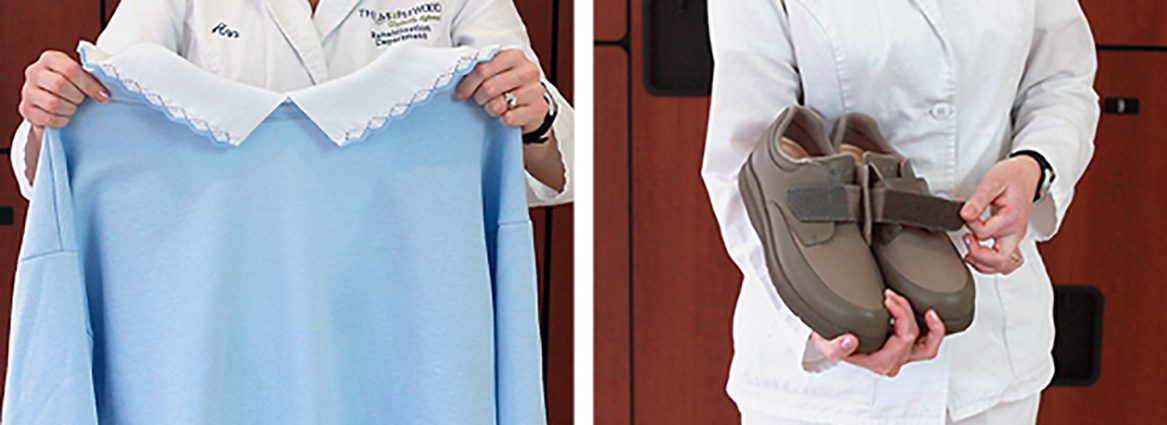As our loved ones age and their mobility decreases, what seems like a simple task of getting dressed every day can actually seem like a chore. Adaptive clothing and footwear can be a true gift.
What is Adaptive Clothing?
Adaptive clothing refers to specialized garments designed for people with physical disabilities, the elderly, and the infirm who may experience difficulty when dressing themselves. This may be due to the inability to manipulate closures such as buttons and zippers or due to lack of full range of motion.
Adaptive clothing often offers rear closure designs so that a caregiver can dress an individual more easily. Easy on-, easy-off clothing is also of benefit to those in need when using the bathroom. Snapback pants and dresses, elastic waistband skirts, and Velcro closures are just a few examples of items that can be purchased for residents to aid in the comfort of dressing every day.
Who Uses Adaptive Clothing?
Adaptive clothing is often used for people with arthritis or joint contractures. Trying to move stiff shoulders to put on a fitted top may cause pain in some individuals. Those with swollen feet may not be able to wear their normal shoes and therefore will need adaptive footwear to accommodate swelling.
Adaptive Clothing in the Nursing Home Setting
Within a skilled nursing facility, the resident’s Certified Nursing Assistant (CNA) will typically have the most direct contact with the resident. Therefore it’s usually the CNA who notices an issue first, such as pain or stiffness that is preventing the resident from dressing without difficulty. The CNA will report the issue to the Nurse Manager, who then works with family members and the Therapy Department to order the clothing.
A Helpful Tip
Adaptive clothing can provide much relief for those in need, but its use requires some additional thought and planning that we may not even consider when dressing ourselves. For those who have loved ones living at home in need of adaptive clothing, here’s a helpful tip: If your loved one has a body side that is weak or contracted, perhaps due to stroke, arthritis, injury, etc., start dressing the affected side of the body first. In the case of a sweater, for example, dress the weaker arm first, and then reach the sweater around to your loved one’s stronger side to dress the unaffected arm second. This prevents your loved one from having to stretch and reach with his or her weaker side in order to get into the garment. Browse our Media Room to see a video demonstration.
Buying and Caring for Adaptive Clothing
Certain companies specialize in this area of need, such as Buck and Buck, Resident Essentials and Care Apparel. They all have convenient websites for ease of ordering. Most adaptive clothing is wash-and-wear, which is nice in that the care and cleaning would be no different than the garment’s non-adaptive counterpart.
Our therapy and nursing departments are on hand for any questions or advice on ordering of products for your loved one residing at The Maplewood.



